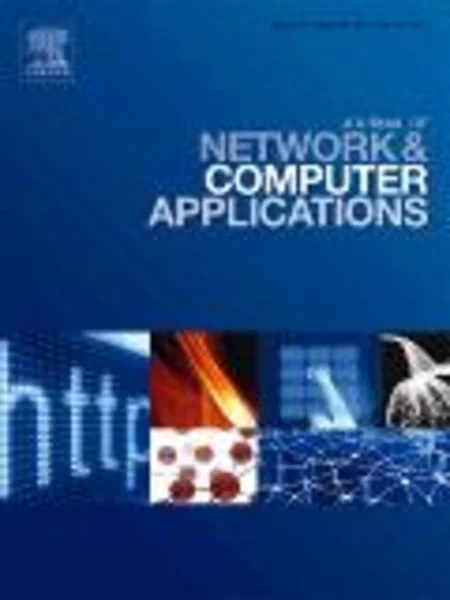-
message scheduling with reduced matrix cycle and evenly distributed sparse allocation for time-triggered can
جزئیات بیشتر مقاله- تاریخ ارائه: 1392/07/24
- تاریخ انتشار در تی پی بین: 1392/07/24
- تعداد بازدید: 987
- تعداد پرسش و پاسخ ها: 0
- شماره تماس دبیرخانه رویداد: -
controller area network (can) was initially developed as an in-vehicle real-time communication bus. due to its low cost and high reliability, it has also become a widely accepted standard in industrial distributed control applications. the can protocol has an event-triggered architecture. although its priority based medium access mechanism provides guaranteed immediate access for the highest priority messages, it may cause unpredictability in communication media for the lower priority messages. in order to address the problems caused by the event-triggered architecture, different time-triggered network architectures, such as ttp, byteflight, and flexray, have been introduced.this paper focuses on time-triggered can (ttcan), which is built on the existing can standard with the addition of time division multiple access (tdma). in order to combine the advantages of the event-triggered and time-triggered communication to meet the requirements of the distributed real-time systems, it is crucial to construct feasible message schedules. in this study, a schedule construction method, based on the reduced matrix cycle and evenly distributed sparse allocation, is introduced to produce the best optimum message schedules possible in terms of the message delay performance. the simulation results show that the method introduced in this study provides significant performance improvement not only for the time-triggered messages but also for the event-triggered messages.
مقالات جدیدترین رویدادها
-
استفاده از تحلیل اهمیت-عملکرد در ارائه الگوی مدیریت خلاقیت سازمانی و ارائه راهکار جهت بهبود
-
بررسی تاثیر ارزش وجوه نقد مازاد بر ساختار سرمایه شرکت های پذیرفته شده در بورس اوراق بهادار تهران
-
بررسی تأثیر سطح افشای ریسک بر قرارداد بدهی شرکت های پذیرفته شده در بورس اوراق بهادار تهران
-
بررسی تأثیر رتبه بندی اعتباری مبتنی بر مدل امتیاز بازار نوظهور بر نقد شوندگی سهام با تأکید بر خصوصی سازی شرکت ها
-
تأثیر آمیخته بازاریابی پوشاک ایرانی بر تصویر ذهنی مشتری پوشاک ایرانی (هاکوپیان)
-
مروری جامع بر مبانی نظری الگوریتم تکامل تفاضلی
-
پیش بینی بهزیستی روان شناختی معلمان مدارس کودکان با نیازهای خاص بر مبنای حمایت ادراک شده سازمانی و خودکارآمدی
-
ارزیابی میزان بار استاتیکی معادل زلزله بر روی گنبدهای مشبک تک لایه
-
بررسی نقش امامزادگان محور میقات الرضا در گردشگری روستایی با استفاده از مدل تاپسیس
-
تعیین سطوح عملکرد ساختمان های بتن سبک مسلح
مقالات جدیدترین ژورنال ها
-
مدیریت و بررسی افسردگی دانش آموزان دختر مقطع متوسطه دوم در دروان کرونا در شهرستان دزفول
-
مدیریت و بررسی خرد سیاسی در اندیشه ی فردوسی در ادب ایران
-
واکاوی و مدیریت توصیفی قلمدان(جاکلیدی)ضریح در موزه آستان قدس رضوی
-
بررسی تاثیر خلاقیت، دانش و انگیزه کارکنان بر پیشنهادات نوآورانه کارکنان ( مورد مطالعه: هتل های 3 و 4 ستاره استان کرمان)
-
بررسی تاثیر کیفیت سیستم های اطلاعاتی بر تصمیم گیری موفق در شرکتهای تولیدی استان اصفهان (مورد مطالعه: مدیران شرکتهای تولیدی استان اصفهان)
-
پیاده سازی حمله الکترومغناطیس بر روی سیستم رمزنگاری aes با ساخت پروبی بهینه و با حساسیت بالا
-
بررسی طرح عشاق در نگارگری ایرانی؛ مطالعه موردی: نگاره آبتنی کردن شیرین در دو مکتب هرات و تبریز
-
اثربخشی آموزش مبتنی بر پذیرش و تعهد بر بهزیستی روانشناختی، تحمل پریشانی و ناگویی هیجانی زوجین
-
بررسی نقش استادان درس های معارف اسلامی در ارتقای سلامت اخلاقی دانشجویان
-
بررسی انحرافات اجتماعی در قرآن و پیامدهای آن در دانش آموزان دوره دوم متوسطه شهرستان دلفان در سال تحصیلی 95-94




سوال خود را در مورد این مقاله مطرح نمایید :